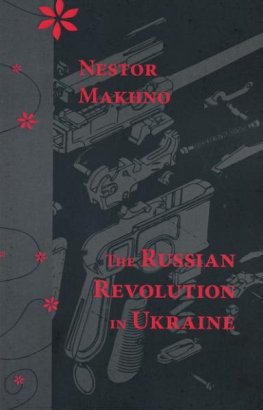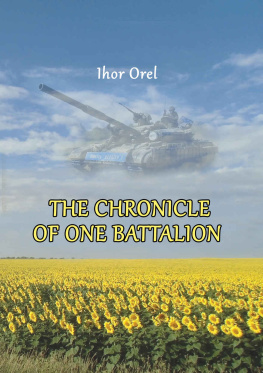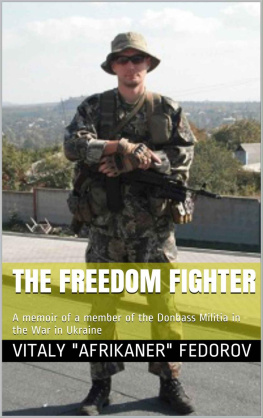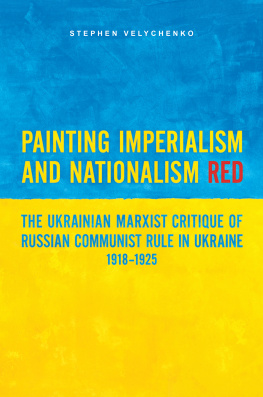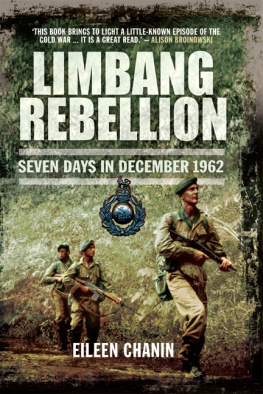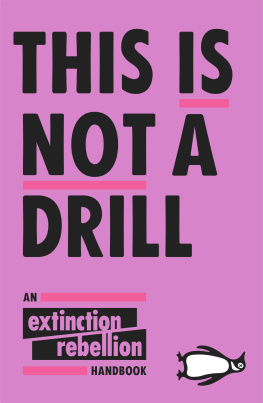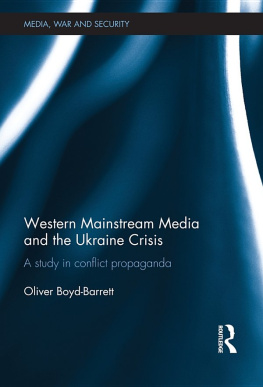Contents
Translators introduction
The collapse of the Soviet Union in 1991 left millions of people in newly independent foreign countries. The death of a shared communist ideology, ethnic diversity, and weak government authority led to a number of conflicts. Tajikistan, East Prigorodny, Chechnya, Nagorno-Karabah, Abkhazia, Georgia, and Pridnestrovia exploded into violence merely months after the end of the USSR.
Cultural and ethnic similarities as well as extensive intermarriage between the East Slavic peoples (Russians, Ukrainians, and Belarusians) ensured that there was peace between the largest successors of the Soviet Union in the 1990s and 2000s. Nonetheless, Ukraine's rule over a substantial Russian population caused numerous issues.
When this book was originally published in Russian in 2018, four years had passed since the peaceful Russian annexation of Crimea, the pro-Russian Donbass Uprising, and the First Donbass War. At the time of this book's publication in English, Russia and Ukraine are currently fighting a much larger war, the Second Donbass War.
It is too early to pass judgement upon those who have fought or are fighting for their nations. It is this translator's hope that the publication of this translation will reduce ignorance and promote knowledge of Eastern European affairs. It is only through understanding that man can attain peace.
I thank everyone who was involved in this translation. Anatoly Karlin and Aleksey Larkin both recommended this book to me as the most comprehensive work on the First Donbass War. Kirill Kaminets and Eoghan Angarin were both invaluable for their assistance in translation and editing. I am indebted to Twitter users @yiihya and @usutav for making the maps and cover of this book respectively.
Peter Nimitz
Dedication
This is the only book on the legendary struggle for Slavyansk written by a soldier. The struggle is thoroughly detailed here from the first day to the last as relayed by the memories of the participants, and supplemented by photos and diagrams of the events.
This book is dedicated to the fallen defenders of Slavyansk
Glossary
BMP - Russian acronym for "infantry combat vehicle" , Eastern Bloc equivalent of Infantry Fighting Vehicles
BTR - Russian acronym for "armored transporter", the Eastern Bloc equivalent of Armored Personnel Carriers
Bumblebee - RPO-A Shmel, a man-portable disposable rocket-assisted flamethrower
Colorado - slur for Russian supporters in Ukraine, referring to the shared orange-black color scheme of the Colorado Potato Beetle and the Saint George Ribbon, as well as the Soviet military medal "For Victory over Germany
"
Donbass - technically a hydrological term referring to the Donets River Basin, but usually used to refer to the predominantly Russian-speaking regions of Donetsk and Lugansk
DPR - Donetsk People's Republic, the wealthier and more populous separatist state in the southern part of the Donbass
Dushman - literally "enemy" in the Dari dialect of Persian, and used by Soviet soldiers to describe their Afghan enemies in the 1979-1989 war
Fly - RPG-18, a disposable man-portable anti-tank weapon
LPR - Lugansk People's Republic, the less populated separatist state in the northern part of the Donbass
RPG - Rocket Propelled Grenade
Russian All-Military Union - organization formed by Russian anti-Communist exiles in 1924
SBU - Ukrainian acronym for Security Service of Ukraine, the successor of the Ukrainian branch of the KGB
Vatnik - slur meaning a dumb, unsophisticated Soviet nostalgic
Foreword
The events discussed in this book took place in our time and were seen with our own eyes. Many of those now reading this book were not mere witnesses to the events, but active participants.
Contemporary people have long become accustomed to stories of heroism, struggles, and wars distant in time and place. At most, they read these stories in books, watch them in movies, or hear them from their grandfathers. They do not experience struggle and do not know heroism.
The events in the Donbass and in Slavyansk are not the affairs of the past and not fiction. They are a new and unexpected struggle which has summoned forth new heroes in a new and unforgettable chapter of Russian history. Those heroes among the living grace our present, and those fallen shall always be remembered.
Despite the continued struggle between Russia and Ukraine and the feats of heroism at Saur-Mogila, Donetsk Airport, and Debaltseve; the Battle of Slavyansk remains the most important battle for us. The veterans both volunteers and militiamen - of the Battle of Slavyansk are considered an elite force in both Lugansk and Donetsk.
The battle is of interest for numerous reasons. Those interested in military science will find it useful to study for lessons that can be used in future wars. Those interested in culture will find it interesting as a factual reference for events that will undoubtedly be popularized in fiction.
I sincerely thank everyone who provided information for this book; in particular Igor Strelkov, Pavel Gubarev, Sergey Dubinsky, Daniel Bezsonov, Sergey "Doc" and Konstantin "Cat". I am also especially grateful to my beloved wife Anastasia for her efforts and support, as well as the chief editor of "Black Hundred" Dmitry Bastrakov, whose valuable comments helped greatly in the writing of this book.
Alexander Zhuchkovsky
Chapter 1 - The Beginning
Date: 12 April 2014
Time: 9:00 am
Location: Slavyansk
Several dozen masked and uniformed fighters wait outside of the interior ministry building as a dark green UAZ car approaches. A fighter removes a cable from the UAZ and ties it to a window grate near the building entrance. Now tied to the grate, the UAZ pulls forward and rips off the grate. The fighters smash the buildings windows with their rifles and climb into the building one by one. Shots ring out.
The fighters swiftly reach the balcony of the interior ministry building. The Ukrainian flag is torn down, and the Russian flag is raised. The crowd in front of the building is delighted by the change in flags and cheers, chanting Russia! Russia! Russia!.
With the interior ministry building captured, the fighters begin to construct improvised barricades. Locals bring tires, wood, shields, and sandbags which the fighters stack around the building.
It was on this spring day, 12 April, that the defense of Slavyansk began.
Until 12 April 2014, few Russians knew of Slavyansk, a city of 100,000 in the north of the Donetsk region. Even fewer knew the name of Igor Strelkov. In the video footage distributed by world media at the time, the leader of the Slavyansk fighters was only shown as an unknown masked man. It would be another two weeks before Strelkov gave his name and showed his face to the world. Strelkov, like Slavyansk, would come to be a symbol of the Donbass Uprising.
The shots fired during the storming of the Slavyansk interior ministry building had been fired into the air for style rather than at enemies for battle. The Ukrainian police had not resisted the assault and surrendered without a fight. No one had been killed or wounded. Nonetheless, these were the first shots fired in the Donbass War. In a later interview, Strelkov admitted that All the same, I pulled the trigger that started the war
Unrest had gripped the Donbass for a month and a half before those fateful shots were fired in Slavyansk. However, it was only on 12 April that a real challenge was thrown at Kiev and the actual armed uprising against Ukrainian occupation began. The next day, 13 April, the Ukrainian government declared the beginning of the anti-terrorist operation (ATO) in the Donbass. Kiev had launched its attack on the east. The war had begun.
At the time of this book's release (August 2018), the war in the Donbass continues. Thousands have died in the war. Many Russians, both Donbass locals and Russian volunteers, have joined the Donbass militia to resist the Ukrainians. Slavyansk is still under Ukrainian occupation and awaiting liberation.
Next page

